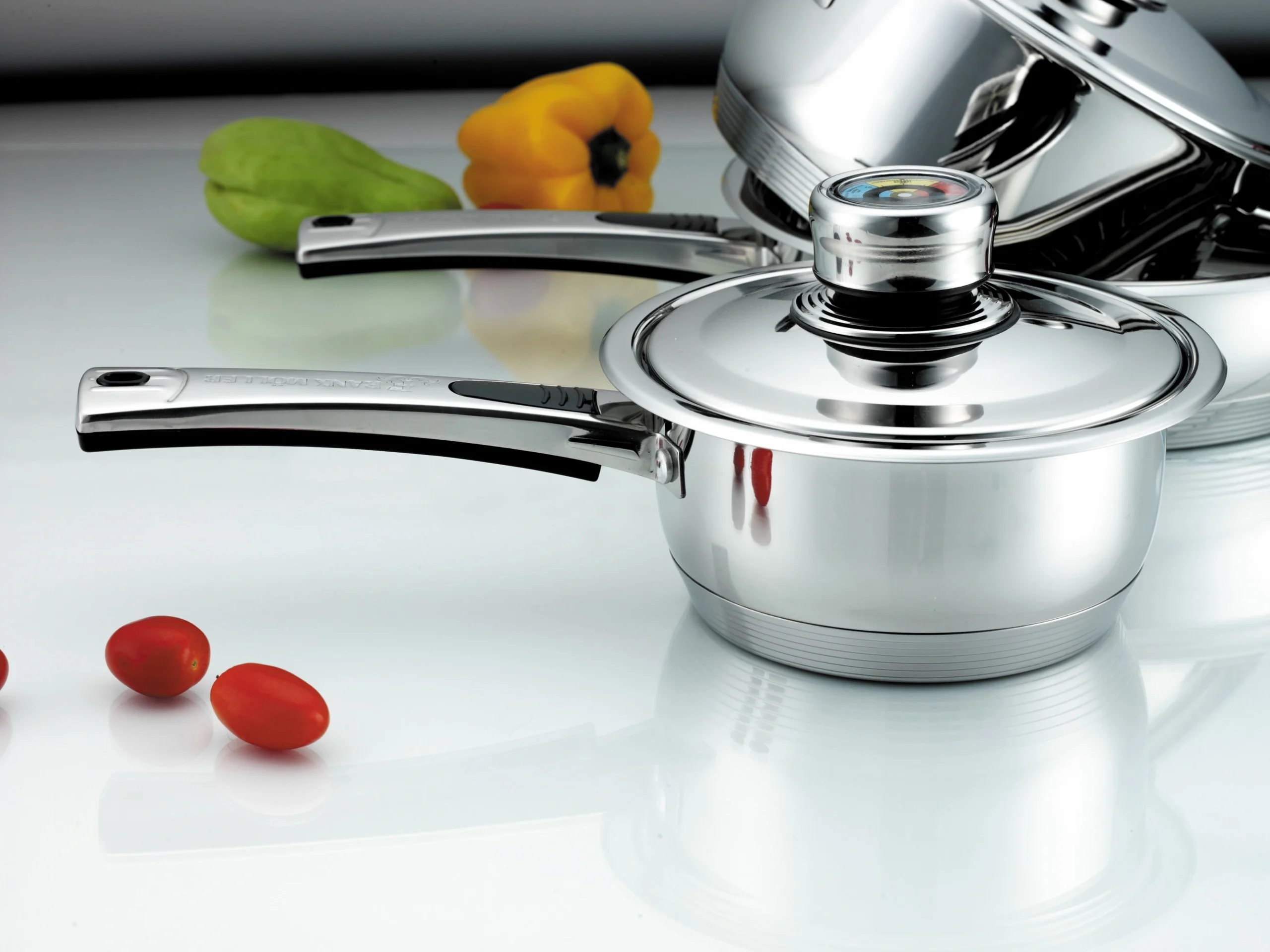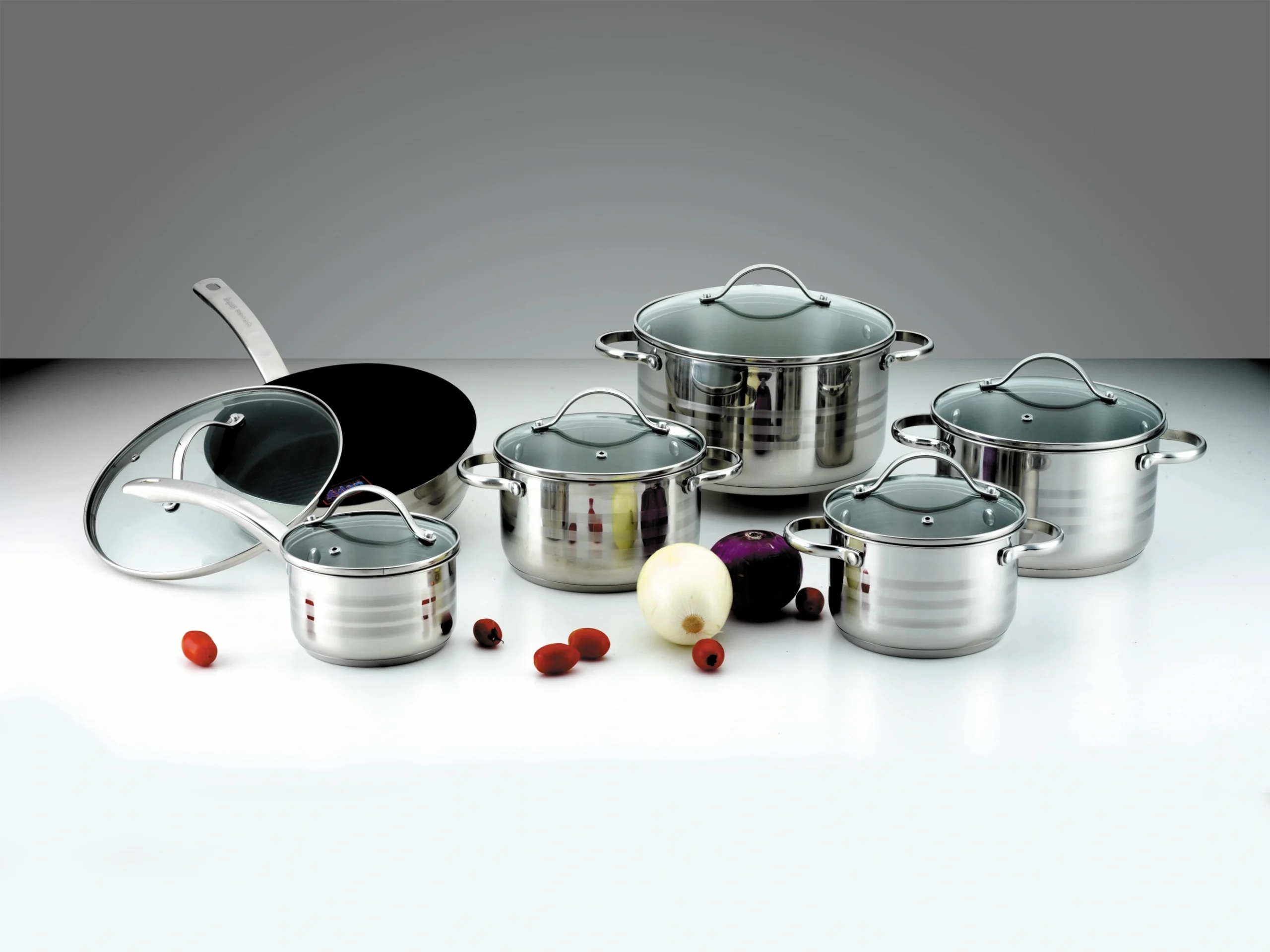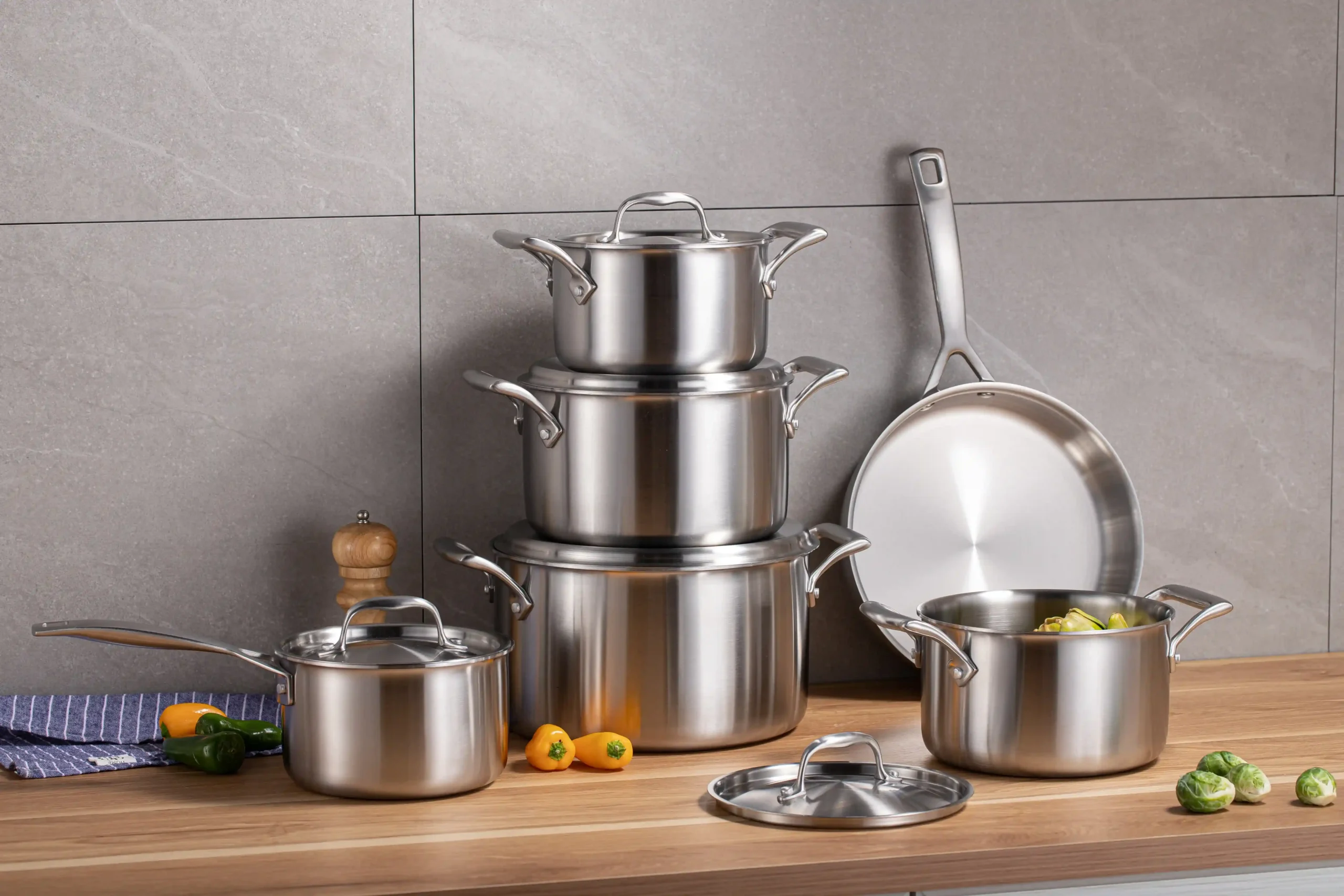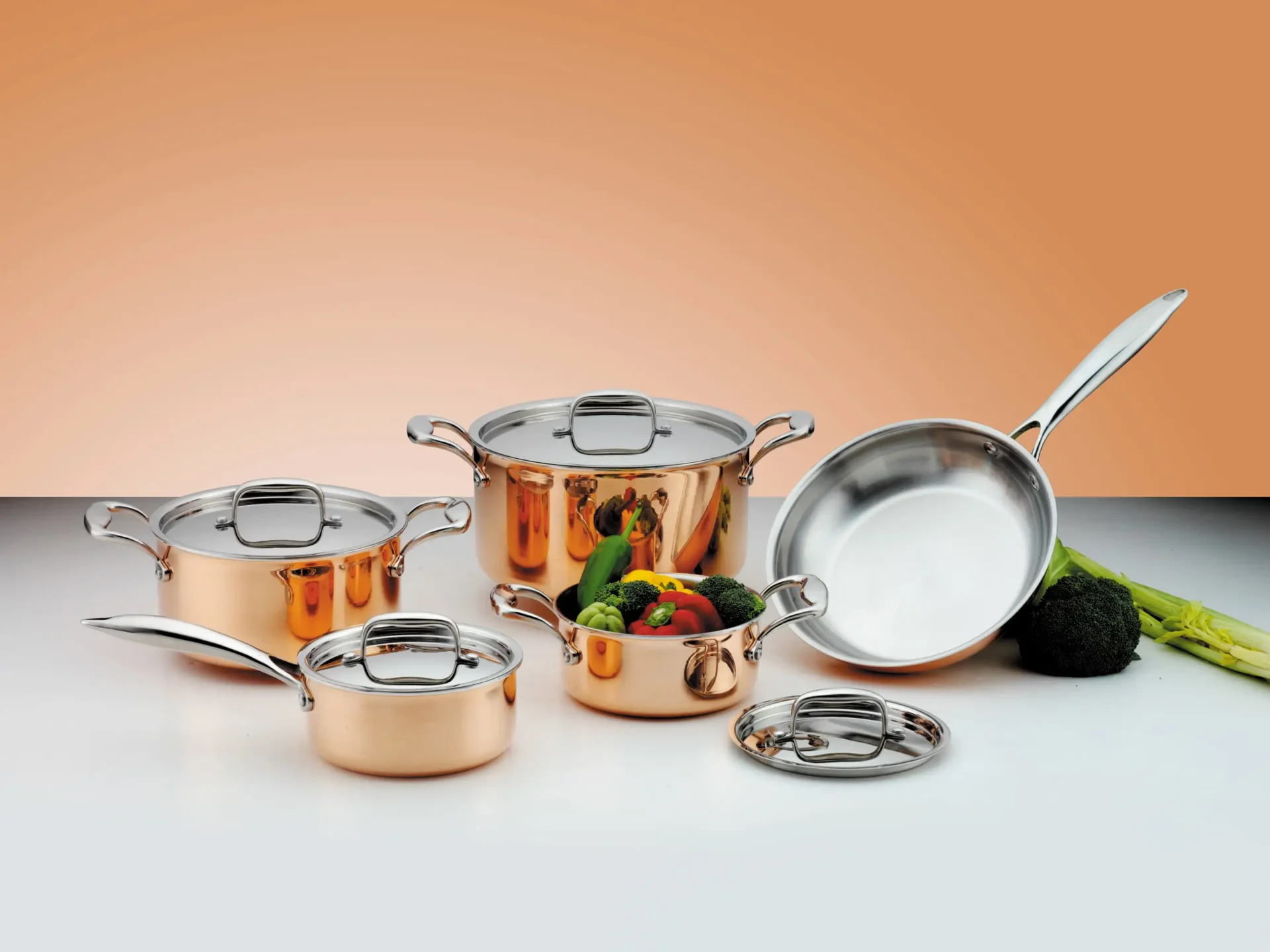
In the world of high-quality cookware, triply cookware stands out as a game-changer—and for good reason. By combining three premium materials in a precise order—304 stainless steel (inner), aluminum (middle), and copper (outer)—it solves the limitations of single-material pots, delivering unmatched heat performance, durability, and safety. Whether you’re a home cook or a professional, understanding the 3-ply advantage helps you invest in cookware that elevates every meal. Below, we break down why this triple-layer design is essential, plus how it enhances products like the copper saucepan and tips for the use and care of copper frypans.
1. What Is 3-Ply Cookware? The Science Behind the Layered Design
1.1 The Three Core Layers & Their Roles
Triply cookware isn’t just a marketing term—it’s a precision-engineered structure with three distinct layers, each serving a critical purpose (ordered from inner to outer):
- Inner Layer: 304 Stainless Steel: The direct contact layer with food, providing food safety, rust resistance, and scratch protection. It’s non-reactive to acidic or salty ingredients (like tomatoes or soy sauce), ensuring no harmful substances leach into meals, and its smooth surface prevents food from sticking.
- Middle Layer: Aluminum: The “heat distributor.” Aluminum heats up quickly and spreads heat evenly across the entire pot body, eliminating hot spots that burn food—a common flaw in single-steel or single-copper cookware. It acts as a bridge, transferring heat from the outer copper layer to the inner 304 steel layer efficiently.
- Outer Layer: Copper: The “heat absorber & conductor.” Copper has exceptional thermal conductivity—heats up in seconds when in contact with stovetops, and responds instantly to temperature adjustments (e.g., turning down heat to simmer). This makes it ideal for precise cooking where heat control is critical.
Together, these layers create a pot that’s “safe to touch food, even to cook, and fast to respond”—the trifecta of premium cookware.
1.2 Why 3-Ply Beats Single-Material Cookware
Single-material pots often force you to compromise: Pure copper is fast-heating but reactive to food and prone to scratches; pure aluminum is light but bends easily and isn’t food-safe alone; pure 304 stainless steel is safe but slow to heat. Triply cookware fixes this by merging the best of all three—you get the food safety of 304 steel (inner), the even heating of aluminum (middle), and the fast heat response of copper (outer)—no compromises needed.
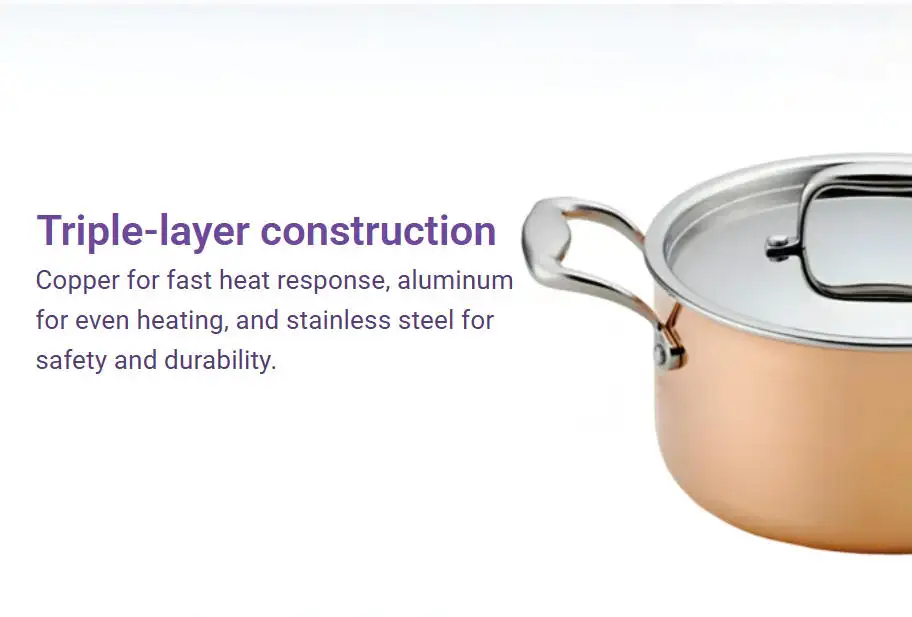
2. The 3-Ply Advantage in Action: Copper Saucepan & Beyond
2.1 How 3-Ply Enhances the Copper Saucepan
The copper saucepan is a prime example of 3-ply design (inner 304 steel + middle aluminum + outer copper) done right. Unlike basic saucepans, its layered structure delivers:
- Fast, Controlled Simmering: The outer copper layer absorbs heat from stovetops in seconds, the middle aluminum spreads it evenly, and the inner 304 steel retains it gently—perfect for creamy soups, tomato sauces, or melting butter, where steady, low heat is key.
- Food-Safe & Easy Cleaning: The inner 304 stainless steel layer is non-stick and non-reactive, so sauce residues wipe off easily. It’s also dishwasher-safe (hand-washing is recommended to protect the outer copper’s shine).
- Stovetop Versatility: The outer copper layer works with gas and electric stovetops, while the middle aluminum’s heat transfer ensures compatibility—no need for separate cookware for different heating sources.
2.2 Why Copper Is Non-Negotiable in 3-Ply Cookware
Copper (as the outer layer) isn’t just a “luxury” in triply cookware—it’s essential for speed and precision. For example, when searing steak in a 3-ply copper frypan: The outer copper layer quickly absorbs high heat from the stovetop, the middle aluminum distributes it to avoid hot spots, and the inner 304 steel creates a perfect crust without burning. This combination is why professional chefs often choose 3-ply copper cookware over other types.
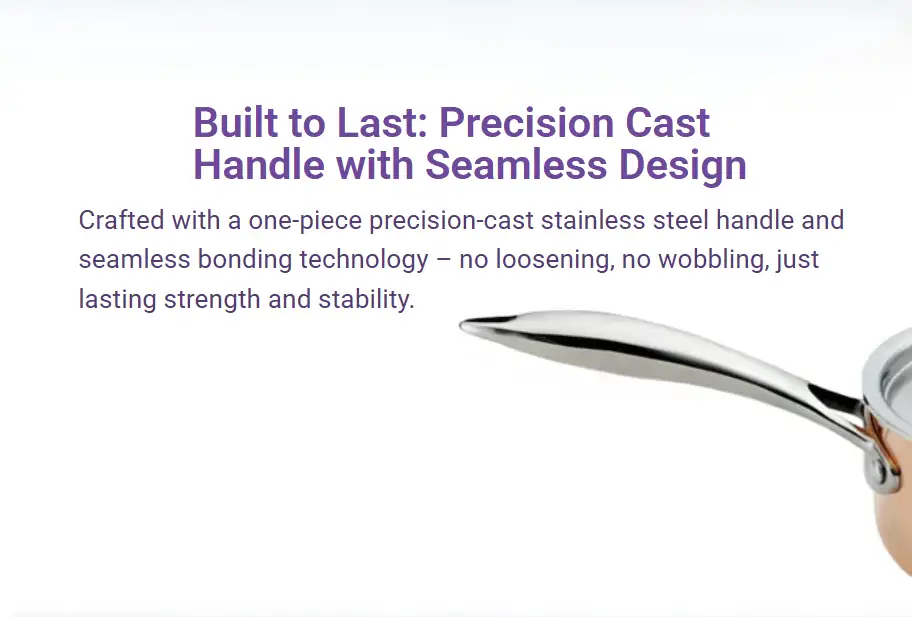
3. Use and Care of Copper Frypans: Maximize Your 3-Ply Investment
3.1 Key Tips for Using Copper Frypans (3-Ply Design)
To get the most out of your 3-ply copper frypan (inner 304 steel + middle aluminum + outer copper), follow these rules for the use and care of copper frypans:
- Preheat Gently: Start with low heat—copper (outer layer) heats fast, so high heat immediately can overheat the inner 304 steel and burn food. Let the pan warm up for 1-2 minutes to let heat spread through all layers.
- Use the Right Utensils: Opt for silicone, wooden, or nylon utensils. Metal utensils can scratch the inner 304 steel layer, exposing the middle aluminum (which isn’t food-safe alone).
- Avoid Salt on Dry Pans: Never add salt to an empty, dry frypan. Salt can react with the inner 304 steel layer when heated, causing small pits—always add salt after adding food or liquid.
3.2 How to Clean & Maintain 3-Ply Copper Frypans
- Daily Cleaning: Wash the inner 304 steel layer with warm water, mild soap, and a soft sponge. For the outer copper layer, wipe with a damp cloth to remove dust or grease—avoid abrasive cleaners that scratch copper’s shine.
- Polish the Outer Copper Layer: Over time, the outer copper may develop a patina (a dark, protective coating). If you prefer a shiny look, use a copper polish (avoid harsh chemicals) and gently buff the outer layer once a month.
- Dry Immediately: After cleaning, dry both inner 304 steel and outer copper layers with a clean towel to prevent water spots on steel and tarnish on copper.
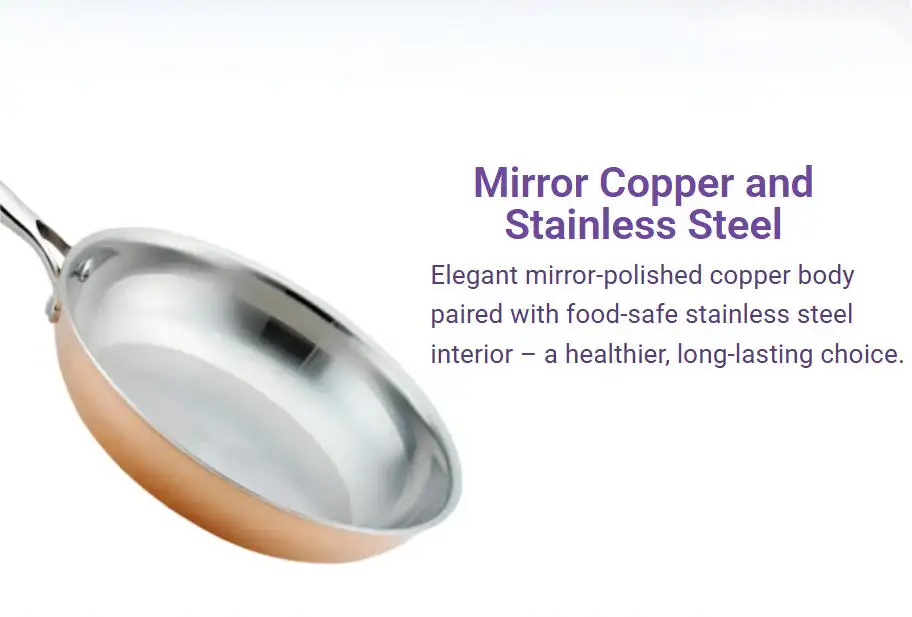
4. Why 3-Ply Cookware Is a Long-Term Investment
4.1 Durability That Lasts Decades
Triply cookware is built to withstand daily use. The inner 304 stainless steel resists scratches and rust, the middle aluminum is protected from bending by the outer copper, and the outer copper’s thickness prevents warping—even with daily use. Unlike non-stick pans that need replacing every 1-2 years, a high-quality 3-ply set can last 10+ years with proper care.
4.2 Cost-Effective in the Long Run
While 3-ply cookware has a higher upfront cost than basic pots, it saves money over time. You won’t need to replace it frequently, and its even heating reduces food waste (no more burnt edges or undercooked centers). Plus, products like the copper saucepan replace multiple single-purpose pots—you can use it for simmering, boiling, and light frying.
5. Conclusion
Triply cookware isn’t just a “nice-to-have”—it’s an essential tool for anyone who takes cooking seriously. By combining 304 stainless steel (inner), aluminum (middle), and copper (outer), it delivers the food safety, evenness, and speed that single-material cookware can’t match. Whether you’re using a copper saucepan for weeknight soups or mastering the use and care of copper frypans for weekend steaks, the 3-ply advantage ensures every meal is cooked to perfection. For home cooks and professionals alike, investing in 3-ply cookware is investing in better food, less waste, and years of reliable use.

